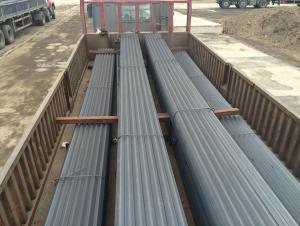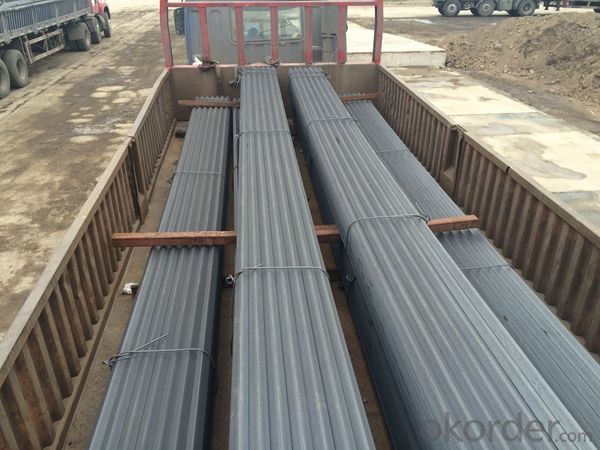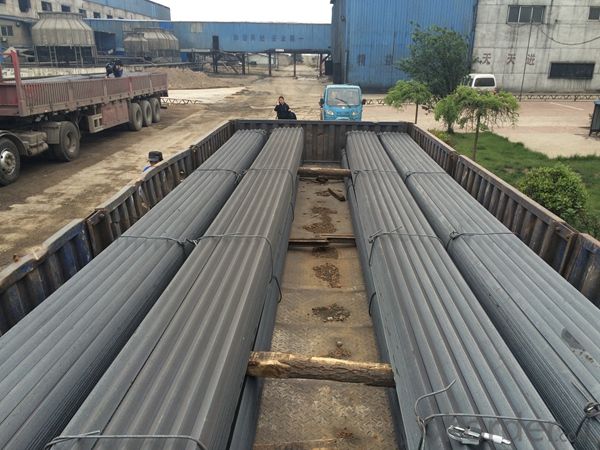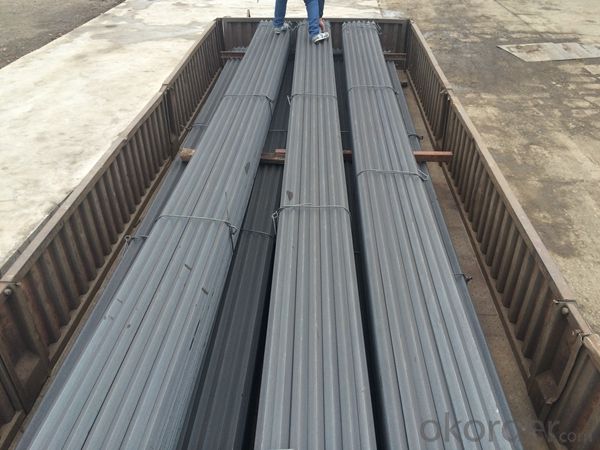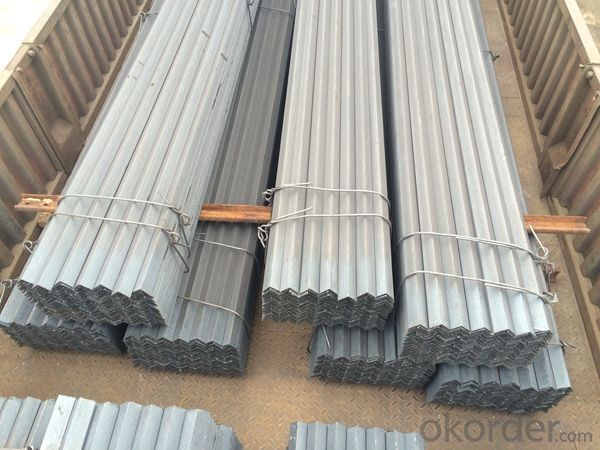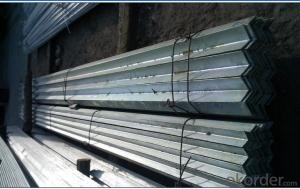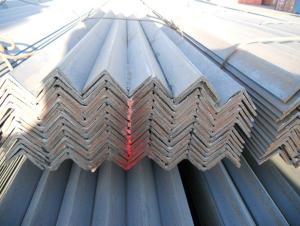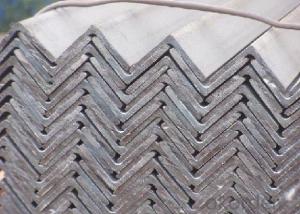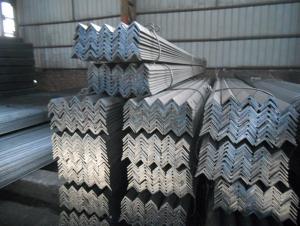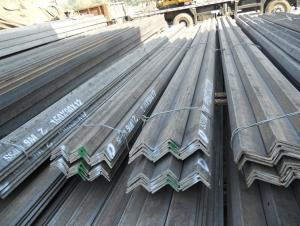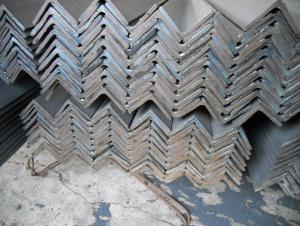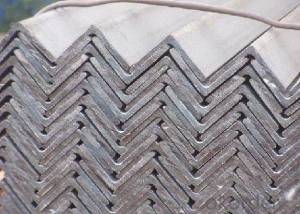Q235 Small angle, angle steel, galvanized angle steel
- Loading Port:
- Tianjin
- Payment Terms:
- TT or LC
- Min Order Qty:
- 25 m.t
- Supply Capability:
- 1000 m.t/month
OKorder Service Pledge
OKorder Financial Service
You Might Also Like
Specification
Product Description:
OKorder is offering Q235 Small angle, angle steel, galvanized angle steel at great prices with worldwide shipping. Our supplier is a world-class manufacturer of steel, with our products utilized the world over. OKorder annually supplies products to European, North American and Asian markets. We provide quotations within 24 hours of receiving an inquiry and guarantee competitive prices.
Product Applications:
Q235 Small angle, angle steel, galvanized angle steel are ideal for structural applications and are widely used in the construction of buildings and bridges, and the manufacturing, petrochemical, and transportation industries.
Product Advantages:
OKorder's Q235 Small angle, angle steel, galvanized angle steel are durable, strong, and resist corrosion.
Main Product Features:
· Premium quality
· Prompt delivery & seaworthy packing (30 days after receiving deposit)
· Corrosion resistance
· Can be recycled and reused
· Mill test certification
· Professional Service
· Competitive pricing
Product Description:
Angle called angle, the steel strip is perpendicular to each other on both sides into angular.Divided into equilateral angle steel and ranging from side angle. Two equilateral angle steel edge width is the same. The specification is expressed by edge width * width * thick edgenumber of millimeters. Such as "/ 30 x 30 x 3", namely that equilateral angle steel edge widthof 30 mm, 3 mm thick edge. Can also be used to model representation, model is the wideangle 3# cm, such as. The model does not represent the same type in different edge thickness size, thus in the contract and other documents on the angle of the edge width, edgethick size fill in complete, avoid alone represented by type. Hot rolled equilateral angle steelspecifications for 2#-20#. Angle according to the different needs of structure composed of a variety of stress components, can also be used as a component of the connections between the. Widely used in a variety of architectural and engineering structures, such as beams,bridges, towers, hoisting and conveying machinery, ships, industrial furnace, reactor,container frame and warehouse.
Mainly divided into equilateral angle steel, equilateral angle steel two categories, includingunequal angle can be divided into equal thickness and unequal thickness ranging from two.
Angle specifications with the side length of the size and edge thickness. At present, the domestic steel specifications for 2 - 20 cm in length, number of numbers, the same horn steel often have 2 - 7 different edge thickness. The actual size and inlet angle marked on both sides of the thickness and indicate the relevant standards. The general length of more than 312.5px for large angle steel, 312.5px - 125px for the medium angle, length of 125px for smallangle.
Inlet and outlet angle steel orders generally required the use specifications in the steel,carbon structural steel grades as appropriate. Is the angle in addition to standard number, nospecific composition and performance series.
Angle steel delivery length is divided into fixed length, size two, domestic steel length range is3 - 9m, 4 12M, 4 19m, 6 19m four range according to different specifications. Japanese steellength ranges from 6 to 15m.
Section of unequal angle height according to the long edge of the width to calculate the non equilateral angle steel. Refer to section angle and side length is not equal to the steel. Is a kind of angle steel. The length from 25mm * 16mm to 200mm * l25mm. By the hot rolling mill rolling in. General scalene angle steel specifications: thickness of 4-18mm / 50*32-- / 200*125
Equilateral angle steel is widely used in all kinds of metal structures, bridges, machinery manufacturing and shipbuilding industry, all kinds of architectural and engineering structures,such as beams, bridges, towers, hoisting and conveying machinery, ships, industrial furnace,reactor, container frame and warehouse etc.
FAQ:
Q1: Why buy Materials & Equipment from OKorder.com?
A1: All products offered byOKorder.com are carefully selected from China's most reliable manufacturing enterprises. Through its ISO certifications, OKorder.com adheres to the highest standards and a commitment to supply chain safety and customer satisfaction.
Q2: How do we guarantee the quality of our products?
A2: We have established an advanced quality management system which conducts strict quality tests at every step, from raw materials to the final product. At the same time, we provide extensive follow-up service assurances as required.
Q3: How soon can we receive the product after purchase?
A3: Within three days of placing an order, we will begin production. The specific shipping date is dependent upon international and government factors, but is typically 7 to 10 workdays.
Images:

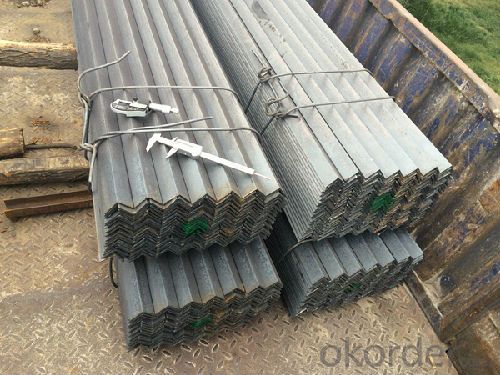
- Q: Can steel angles be used for manufacturing support brackets?
- Indeed, support brackets can be manufactured using steel angles. The construction and manufacturing industries frequently employ steel angles due to their robustness and endurance. Their exceptional support and structural soundness render them perfect for the creation of support brackets. Steel angles are offered in diverse dimensions and thicknesses, enabling customization in accordance with the bracket's precise demands. Moreover, steel angles can be effortlessly welded, drilled, and machined to fit the desired specifications, thus making them an adaptable option for the production of support brackets.
- Q: How many kilograms per square meter is angle steel 63*63*6?
- Angle gaugeCalculation method of angle weight:Weight per meter =0.00785* (edge width + edge width - side thickness) * edge thicknessEquilateral angle steel, kg/m equal angle steel, kg/m equal angle steel, kg/m25*3 1.124, 70*8 8.373, 110*12 19.78225*4 1.459, 75*5 5.818, 110*14 22.80930*3 1.373, 75*6 6.905, 120*10 18.20030*4 1.786, 75*7 7.976, 120*12 21.60040*3 1.852, 75*8 9.030, 125*8 15.504
- Q: How are steel angles cut to specific lengths?
- Steel angles are cut to specific lengths using various cutting tools and techniques. One common method is using a saw, such as a band saw or a circular saw with a metal-cutting blade. The angle is securely clamped or held in place, and the saw blade is guided along the desired cutting line to make a clean and precise cut. Another method is using an abrasive cutting wheel, also known as a cutoff wheel or a grinding disc. This technique is often used for thinner steel angles or when a more precise cut is required. The angle is secured in a vise or a similar holding device, and the cutting wheel is carefully guided along the marked cutting line to remove the excess material. For larger and thicker steel angles, a plasma cutter or an oxy-fuel torch may be used. Both methods involve heating the steel to a high temperature, causing it to melt or oxidize, allowing for a clean and accurate cut. Plasma cutters use a focused jet of ionized gas, while oxy-fuel torches rely on a combination of oxygen and a fuel gas, such as acetylene or propane. In some cases, steel angles can also be cut using more specialized techniques, such as water jet cutting or laser cutting. Water jet cutting involves using a high-pressure stream of water mixed with abrasive particles to erode the steel, while laser cutting utilizes a concentrated laser beam to melt or vaporize the material along the desired cutting path. Regardless of the method used, the key is to ensure the angle is securely held in place and the cutting tool is guided accurately along the marked cutting line. Proper safety precautions, such as wearing protective eyewear and gloves, should always be taken when cutting steel angles to specific lengths.
- Q: Can steel angles be recycled?
- Yes, steel angles can be recycled. Steel is one of the most recycled materials in the world, and steel angles can be recycled through various processes such as melting and refining, which allows them to be used in the production of new steel products. Recycling steel angles helps conserve natural resources, reduces energy consumption, and minimizes waste.
- Q: How do steel angles contribute to the seismic resilience of a structure?
- Steel angles are an essential component in enhancing the seismic resilience of a structure. These angled steel members are commonly used in construction to provide additional strength and stability, particularly in earthquake-prone areas. One way steel angles contribute to the seismic resilience of a structure is through their ability to resist lateral forces caused by seismic activities. During an earthquake, buildings are subjected to horizontal forces that can cause significant damage. Steel angles are strategically placed within the structure to help distribute and dissipate these forces, thus reducing the overall impact on the building. By acting as braces or stiffeners, steel angles enhance the structural integrity and prevent excessive deformation or collapse. Furthermore, steel angles are often used in conjunction with other seismic design strategies, such as moment frames or shear walls. These elements work together to create a robust and flexible structural system that can withstand the dynamic forces generated during an earthquake. Steel angles are typically integrated into these systems to provide additional reinforcement and increase the overall strength and rigidity of the structure. In addition to their role in resisting lateral forces, steel angles also contribute to the seismic resilience of a structure by improving its load-carrying capacity. By distributing loads more efficiently, steel angles help to reduce the stress on individual components, preventing localized failures and ensuring the overall stability of the structure. Moreover, steel angles are highly durable and possess excellent material properties, such as high tensile strength and toughness. This makes them well-suited for withstanding the dynamic loading and cyclic motions associated with earthquakes. Steel angles are also resistant to corrosion, which is crucial for maintaining the long-term structural integrity and overall performance of a building in seismic events. In conclusion, steel angles play a crucial role in enhancing the seismic resilience of a structure. By resisting lateral forces, improving load-carrying capacity, and providing durability, they contribute to the overall stability and integrity of the building. Incorporating steel angles into the design and construction process is essential for creating structures that can withstand seismic activities and ensure the safety of occupants.
- Q: Can steel angles be used for manufacturing staircases?
- Yes, steel angles can be used for manufacturing staircases. Steel angles are commonly used in construction and fabrication due to their strength, durability, and versatility. When used for staircases, steel angles can provide the necessary support and structural integrity required to ensure the safety and stability of the staircase. They can be used to create the framework, stringers, and risers of the stairs, providing a solid base for the steps. Steel angles can be easily welded, bolted, or otherwise connected to form a sturdy staircase. Additionally, they can be easily customized to fit specific design requirements and can be coated or painted to enhance their aesthetic appeal. Overall, steel angles are a popular choice for manufacturing staircases due to their strength, durability, and adaptability.
- Q: Can steel angles be used in curtain wall systems?
- Yes, steel angles can be used in curtain wall systems. Steel angles are commonly used as support brackets or mullions in curtain wall systems. They provide structural strength and support to the glass panels or other cladding materials. Steel angles can be fabricated in various sizes and shapes to accommodate the specific design requirements of the curtain wall system. Additionally, steel angles can be welded or bolted together to create the desired framework for the curtain wall. Overall, steel angles offer a durable and reliable option for incorporating into curtain wall systems.
- Q: How do steel angles contribute to the overall strength of a structure?
- Steel angles contribute to the overall strength of a structure in several ways. First and foremost, they provide structural stability by distributing the load and forces evenly throughout the structure. The L-shape of steel angles allows them to resist bending and twisting, making them ideal for providing support and preventing deformation. Steel angles are often used as bracing elements in construction due to their high strength-to-weight ratio. By adding diagonal steel angles to a structure, it becomes more resistant to lateral forces such as wind or seismic loads. These angles help to transfer the applied forces to the foundation, reducing the risk of structural failure. Another way steel angles contribute to strength is by providing additional reinforcement. They can be strategically placed at critical points of a structure, such as corners or joints, to enhance its overall rigidity and durability. Steel angles can also be used as framing members, supporting beams, or columns, further enhancing the load-bearing capacity of the structure. Moreover, steel angles are resistant to corrosion and have a long lifespan, making them a reliable choice for structural applications. They can withstand harsh environmental conditions, ensuring the structural integrity of the building over time. Overall, steel angles play a crucial role in enhancing the strength and stability of a structure. Their ability to distribute loads, resist bending and twisting, provide reinforcement, and withstand environmental factors make them an essential component in modern construction.
- Q: How do you determine the required number of steel angles for a project?
- Determining the required number of steel angles for a project involves considering several factors. Firstly, it is important to understand the design and specifications of the project. This includes the structural requirements, load-bearing capacities, and any specific angles or dimensions that need to be incorporated. Secondly, the dimensions of the steel angles need to be determined based on the intended use and structural requirements. This includes considering the length, width, and thickness of the angles that would be suitable for the project. Once the dimensions are established, the next step is to calculate the number of angles required. This can be done by carefully measuring and estimating the lengths of the steel angles needed in each area of the project. It is important to consider any potential waste or additional cuts that may be required during the installation process. In addition, it is recommended to consult with structural engineers or professionals experienced in steel fabrication to ensure accurate calculations and to confirm that the selected steel angles meet the necessary safety standards and building codes. Ultimately, determining the required number of steel angles for a project requires a combination of careful planning, accurate measurements, and professional expertise to ensure the project is structurally sound and meets all necessary requirements.
- Q: What is the weight of a steel angle?
- The weight of a steel angle depends on its dimensions and density. To calculate the weight, one needs to know the length, width, and thickness of the steel angle. By multiplying the volume of the angle (length x width x thickness) by the density of steel, one can determine its weight. The density of steel is typically around 7.85 grams per cubic centimeter. Therefore, the weight of a steel angle can be calculated using the formula: weight = volume x density.
Send your message to us
Q235 Small angle, angle steel, galvanized angle steel
- Loading Port:
- Tianjin
- Payment Terms:
- TT or LC
- Min Order Qty:
- 25 m.t
- Supply Capability:
- 1000 m.t/month
OKorder Service Pledge
OKorder Financial Service
Similar products
Hot products
Hot Searches
Related keywords
